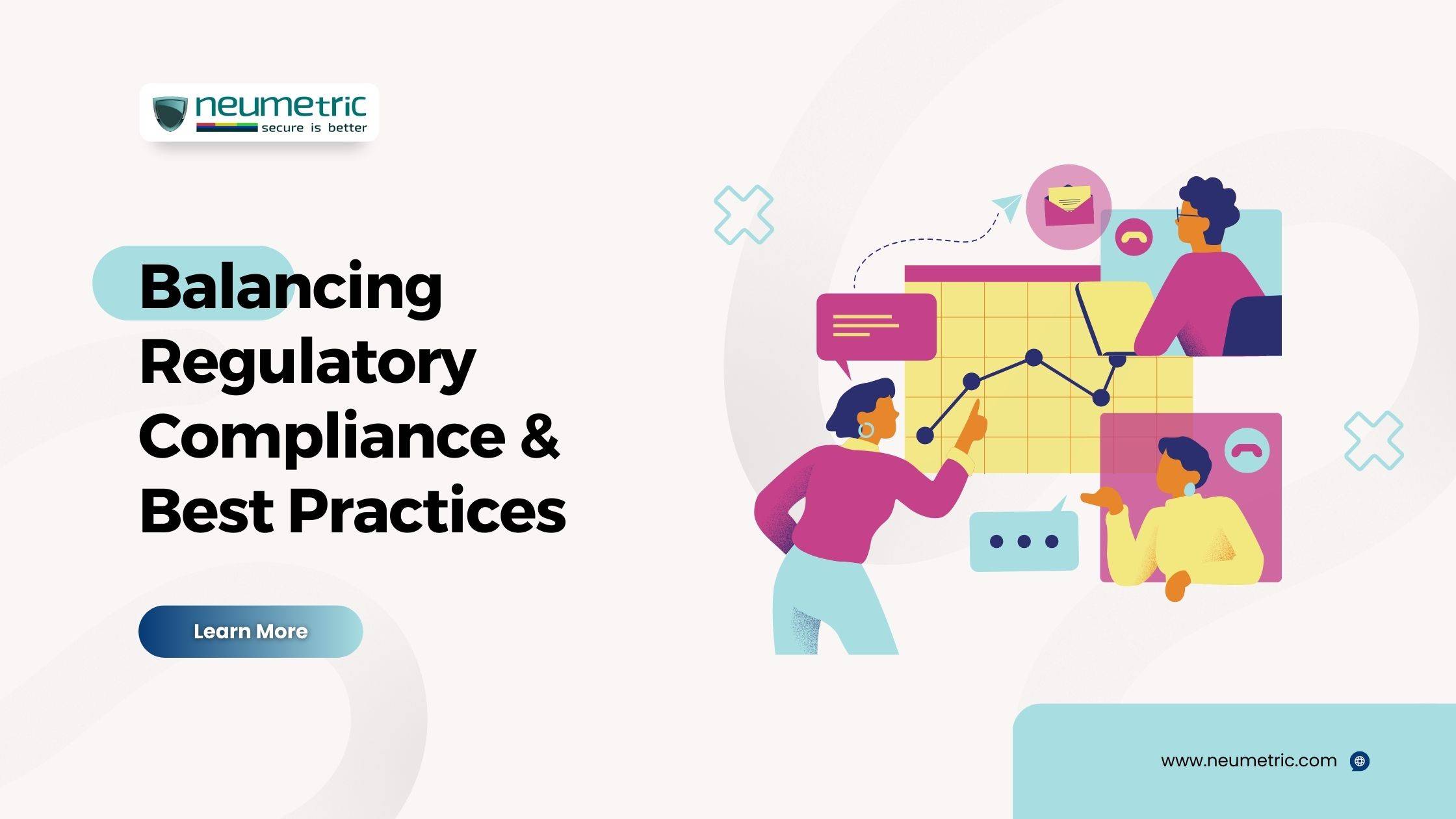Table of Contents
ToggleIntroduction
The introduction will provide an explanation of why regulatory compliance is so important to companies in a range of sectors. It will draw attention to the core goals of rules, which are to uphold moral principles, guarantee consumer safety & promote fair competition. There will be a focus on how following regulations is not only required by law but also serves as a basis for developing trust among stakeholders.
In-depth discussion of industry standards’ dynamic character & ongoing growth will be provided in this paragraph. It will examine the several elements that have contributed to this transformation, including improvements in technology, modifications in consumer demands & changes in the world economy. The idea is to show that maintaining compliance is a dynamic process that calls for flexibility in response to the ever-evolving corporate environment.
The main idea of the journal will be introducing: maintaining a careful balance between industry best practices & regulatory compliance. It will go over how companies frequently struggle to follow legal requirements while also attempting to implement tactics that surpass the bare minimum. The intention is to lay the groundwork for a careful investigation of the ways in which companies might successfully manage this complex relationship over time.
Understanding Regulatory Compliance
Organisations that comply with industry-specific laws, rules & regulations are said to be in conformity with regulatory compliance. It includes a collection of rules that companies must abide by in order to guarantee moral behaviour, safeguard customers & preserve fair competition. These rules are created by governmental entities or industry authorities. Beyond merely fulfilling legal requirements, regulatory compliance is important since it establishes a company’s ethical foundation & emphasises its dedication to ethical business practices.
Recognising the critical role regulatory bodies play is essential to understanding the regulatory compliance landscape. These entities are responsible for setting & enforcing the rules that govern specific industries. The General Data Protection Regulation [GDPR] for data protection in the European Union, the Securities & Exchange Commission [SEC] in the financial sector & the Food & Drug Administration [FDA] in the healthcare industry are a few examples.
The consequences of non-compliance
Legal implications: Breaking regulatory requirements may have serious legal repercussions. Organisations that disregard established regulations frequently face fines, penalties & legal action. Legal disputes may be expensive & time-consuming, which can negatively affect a business’s finances & take resources away from other important tasks.
Reputational hazards: Significant reputational risks arise from non-compliance, even beyond the legal domain. Public trust is a precious resource & a company’s reputation can be damaged when partners, investors & customers believe that rules are not being followed. A company’s ability to succeed may be negatively impacted by unfavourable press, dwindling client loyalty & trouble luring investors.
The Interplay with Industry Best Practices
The term “industry best practices” describes the tried-and-true procedures, methods & approaches that businesses in a certain field believe work best for accomplishing their goals. Regulations may not always require these practices, but they are acknowledged as the best ways to achieve effectiveness, excellence & success in the end. They frequently come from professionals & leaders in the field who have discovered tactics that, when used consistently, produce better outcomes.
Despite having different roots, best practices & regulatory compliance are related because they have similar goals. Although legal standards are established by regulatory compliance, best practices provide organisations with a path to greatness. While best practices direct companies towards peak performance & ongoing development, compliance guarantees that they adhere to the minimal requirements needed for moral & legal conduct.
Potential conflicts & challenges in aligning
Allocating Resources: Organisational resources may be strained if compliance & best practices are pursued concurrently. Budgetary restrictions can make it difficult for businesses to invest in both meeting legal requirements & pursuing excellence.
Changing Regulations: Because regulations are changing, there may be uncertainty. Being alert & flexible is necessary to stay on top of changing compliance regulations & follow accepted best practices.
Priorities that conflict: Occasionally, what is deemed a best practice might not align with particular regulatory needs. An organisation may share a lot of data internally as part of a data security best practice, however this may violate data protection laws.
Navigating Specific Industries
A. Healthcare Sector
HIPAA Compliance: The Health Insurance Portability & Accountability Act [HIPAA] must be followed to the letter in the healthcare industry because of its strict regulatory environment. HIPAA mandates the use of security measures to protect patient privacy by healthcare providers, insurers & connected entities. It also specifies standards for the secure handling of PHI. Implementing secure Electronic Health Records [EHR], carrying out routine risk assessments & guaranteeing patient data confidentiality are all necessary to navigate HIPAA compliance.
Patient Data Protection: Comprehensive patient data protection must be given top priority by healthcare organisations in addition to HIPAA compliance. This entails following best practices to protect sensitive data in addition to complying with legal requirements. Maintaining the confidentiality & security of patient data requires staff training on data security, access limits & data encryption.
B. Financial Sector
SEC Regulations: To safeguard investors & preserve the integrity of the financial markets, the financial industry is subject to strict regulations. The Securities & Exchange Commission [SEC] is primarily responsible for establishing & implementing rules pertaining to publicly traded corporations. Complying with financial disclosures, reporting obligations & insider trading restrictions are all part of navigating SEC laws. To maintain transparent & compliant financial processes, businesses in this industry need to stay up to date on any changes to SEC laws.
Anti-Money Laundering [AML] Procedures: Financial institutions must implement anti-money laundering procedures in order to stop illegal financial activity. Implementing strong AML programmes, checking the background of customers & reporting questionable transactions are all part of compliance. To successfully identify & stop money laundering, financial institutions must find a balance between operational effectiveness & regulatory compliance.
C. Technology & Data Privacy
Global Data Protection Regulations [GDPR]: Regulations protecting data privacy, like the General Data Protection Regulation [GDPR], are crucial given the global environment in which the IT sector operates. Complying with these requirements requires that information processing be done lawfully, that persons’ rights over their personal data be understood & that methods for data subject consent be put in place. To comply with GDPR & comparable rules, businesses must set up transparent data policies & procedures for data breaches.
Cybersecurity Best Practices: In an era where cyber threats are prevalent, technology companies must prioritize cybersecurity as both a best practice & a regulatory requirement. This involves implementing robust cybersecurity measures, conducting regular risk assessments & staying informed about emerging threats. Companies should not only meet the minimum cybersecurity standards mandated by regulations but also adopt best practices to protect sensitive data & maintain the trust of their users.
Strategies for Achieving the Balance
Developing a Comprehensive Compliance Strategy
Regular Risk Assessments: Organisations must first create a thorough compliance plan in order to strike the difficult balance between regulatory compliance & best practices. Regular risk assessments are the first step in this. Businesses can proactively fix weak points by methodically identifying & assessing potential hazards. To find areas where best practices can be improved & compliance gaps, this entails evaluating systems, procedures & staff behaviour. Frequent risk assessments offer a road map for efficiently allocating resources & setting priorities for compliance initiatives.
Keeping Up with Regulatory Changes: Laws & standards are subject to constant change, making the regulatory environment dynamic. It is imperative for organisations to remain up to date on regulatory developments in order to ensure compliance. By setting up systems for continuous regulatory update monitoring, companies can make sure they are informed of any new regulations & can modify their plans accordingly. To keep abreast of legislative developments, this may entail designating a compliance officer, subscribing to industry periodicals & actively engaging in pertinent professional networks.
Integrating Best Practices into Daily Operations
Employee Training & Awareness: Bringing best practices into regular operations calls for a culture transformation within the company, which frequently starts with training & awareness initiatives for staff members. All staff members must be aware of the significance of best practices & compliance in their day-to-day duties. Training curricula ought to highlight the organization’s dedication to operational excellence & address certain regulatory obligations pertinent to their responsibilities.
Initiatives for Continuous development: Finding balance is a process that takes time & requires a dedication to constant development. It is recommended that organisations put in place measures that promote feedback, track performance & pinpoint areas that could use improvement. The organisation stays flexible & resilient by routinely evaluating & revising internal procedures in light of employee input, regulatory changes & lessons gained.
The Role of Technology
Tools for Compliance Tracking: By employing specialised tracking tools, technology significantly improves compliance management. With the use of these tools, organisations can keep an eye on & oversee their compliance initiatives in real time. Tools for monitoring compliance simplify paperwork, make audits easier & reveal possible non-compliance areas. These solutions enable firms to demonstrate conformity to regulations & respond quickly to requests for information by centralising data relevant to compliance.
Data Analytics for Risk Management: In the field of risk management in particular, data analytics has emerged as a key component of best practices. Organisations can find possible dangers, trends & opportunities for improvement by using data analytics technologies. Proactive decision-making & anticipating compliance issues can both be aided by predictive analytics. When used in conjunction with best practices, data analytics helps businesses make data-driven, well-informed decisions that improve their capacity to handle the challenges associated with regulatory compliance.
Future Trends & Considerations
Emerging Regulations & Their Potential Impact: The regulatory landscape is dynamic, with new laws & standards emerging over time. Organizations must keep a watchful eye on emerging regulations within their industry & geographic locations. Anticipating the potential impact of new regulations allows companies to adapt their strategies proactively, minimizing disruptions & ensuring continued compliance.
The Role of Sustainability & Ethical Considerations: Future trends in compliance & best practices are increasingly influenced by considerations of sustainability & ethics. Companies are under growing pressure to demonstrate environmental responsibility, ethical business practices & social accountability. Aligning with sustainability goals & ethical considerations not only enhances a company’s reputation but is becoming a regulatory expectation in some sectors.
Conclusion
As one navigates the complexities of striking a balance between best practices & regulatory compliance, a number of important findings have been investigated. We began by exploring the changing landscape of industry standards & realising how crucial regulatory compliance is as the cornerstone of moral business practices. Organisations’ navigation of these intricate seas is influenced by the key issue of the delicate balance that emerges between compliance & best practices.
We also looked at particular sectors, such technology, healthcare & finance, to comprehend the particular compliance issues they deal with. The methods for striking a balance were explained in depth & they included both thorough compliance plans & incorporating best practices into regular operations. Technology’s transformative role in compliance management & shaping best practices highlighted the dynamic relationship between innovation & regulatory adherence.
Reaching the ideal equilibrium between best practices & regulatory compliance is a strategic objective as well as a business requirement. Companies have to understand that, although necessary for moral & legal reasons, compliance is only the beginning. This dedication is strengthened by the pursuit of best practices, which promotes a culture of quality, creativity & ongoing development.
Finding the ideal balance guarantees that businesses will not only comply with regulations but will also set themselves up for long-term success. It involves going above & above the call of duty to uphold moral principles, operational excellence & a dedication to both meeting & beyond stakeholder expectations.
The dynamic nature of the business landscape demands a proactive approach to compliance & best practices. This involves anticipating changes in regulations, staying informed about emerging industry standards & leveraging technology to streamline processes. Proactivity is the key to successfully navigating the challenges posed by shifting regulatory landscapes & evolving best practices.
FAQ’s
- Why is regulatory compliance important for businesses?
Regulatory compliance is crucial for businesses as it ensures adherence to laws & standards, fostering ethical conduct, consumer trust & legal stability.
- What are some examples of regulatory bodies in different industries?
Examples include the FDA [healthcare], SEC [financial] & GDPR [technology/data privacy], each governing specific regulations within their respective sectors.
- What role does employee training play in achieving the balance?
Employee training is essential for integrating best practices; it fosters a culture of compliance, awareness & a shared responsibility for maintaining the balance.





